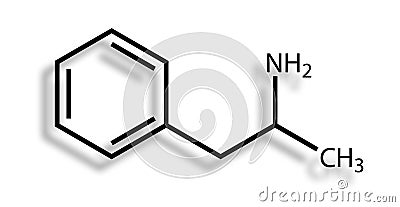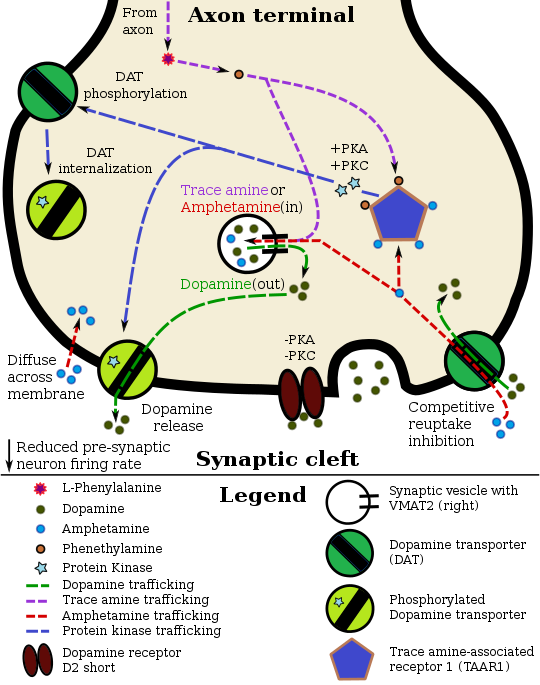

These results show that some CYAM is in DA neuron VMAT vesicles and suggests a new drug interaction in which amphetamine induces CYAM deprotonation and release as a consequence of the H+ countertransport by VMAT that accompanies vesicular uptake, but not by inducing exchange or acting as a weak base. In vivo CYAM administration and in vitro experiments confirmed that clinically relevant CYAM concentrations result in vesicular accumulation and pCA-dependent release. Furthermore, parachloroamphetamine (pCA), acting via vesicular monoamine transporter (VMAT), and a charged VMAT, substrate 1-methyl-4-phenylpyridinium (MPP+), reduced striatal CYAM. Striatal CYAM overlapped with the dopamine transporter (DAT). In the striatum, Ca2+-dependent reduction of the CYAM punctate signal was induced by depolarization or action potentials. Thus, CYAM is subject to acidic trapping and released upon deprotonation. CYAM accumulated slowly into puncta based on vacuolar H+-ATPase activity and dispersed rapidly upon dissipating organelle pH gradients. Here, the APD cyamemazine (CYAM) is visualized directly by two-photon microscopy in substantia nigra and striatum brain slices. Because many APDs are dopamine (DA) D2 receptor (D2R) antagonists, such a mechanism would be particularly interesting if it operated in midbrain DA neurons. This synaptic corelease is expected to enhance APD antagonism of D2Rs where and when dopaminergic transmission occurs.Ībstract = "Based on lysotracker red imaging in cultured hippocampal neurons, antipsychotic drugs (APDs) were proposed to accumulate in synaptic vesicles by acidic trapping and to be released in response to action potentials. Therefore, in the striatum, APDs are released with DA in response to action potentials and an amphetamine. These results show that some CYAM is in DA neuron VMAT vesicles and suggests a new drug interaction in which amphetamine induces CYAM deprotonation and release as a consequence of the H + countertransport by VMAT that accompanies vesicular uptake, but not by inducing exchange or acting as a weak base. Furthermore, parachloroamphetamine (pCA), acting via vesicular monoamine transporter (VMAT), and a charged VMAT, substrate 1-methyl-4-phenylpyridinium (MPP +), reduced striatal CYAM.

In the striatum, Ca 2+-dependent reduction of the CYAM punctate signal was induced by depolarization or action potentials.


Based on lysotracker red imaging in cultured hippocampal neurons, antipsychotic drugs (APDs) were proposed to accumulate in synaptic vesicles by acidic trapping and to be released in response to action potentials.


 0 kommentar(er)
0 kommentar(er)
